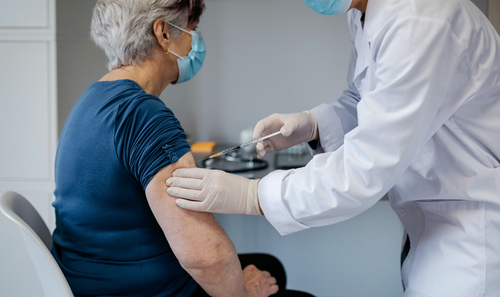Can we accurately forecast non-elective bed occupancy and admissions in the NHS? A time-series MSARIMA analysis of longitudinal data from an NHS Trust
1 July 2022
Hospitals need to be able to predict their capacity for admitting patients when planning elective surgeries. Researchers funded by HDR UK developed a new model for making forecasts that were more accurate 95 per cent of the time.

Overview
Hospitals need to be able to predict their capacity for admitting patients when planning elective surgeries. Current systems for doing this can be further improved to minimise the number of cancelled operations and inform better use of resources. Researchers funded by HDR UK developed a new model for making forecasts that were more accurate 95 per cent of the time.
The challenge
Hospital bed occupancy is difficult to predict as the number of patients needing to be admitted from Accident and Emergency departments cannot be known in advance. If there are more patients than expected, hospitals may need to reschedule elective surgeries; if there are fewer, then valuable resources may go unused, which is particularly undesirable with longer waiting lists following disruptions due to Covid-19. The current systems used by the NHS can attempt to predict the occupancy six weeks ahead to allow time for planning, however it is difficult to accurately forecast this far in advance.
The solution
Researchers supported through the Better Care partnership funded by HDR UK developed a new model for forecasting bed occupancy. Using data from North Bristol NHS Trust, they studied how different factors influenced emergency admissions and bed occupancy between 2016 and 2019. Using a model based on the day of the week, holidays and data from the same day the previous year on temperature and precipitation, the team made forecasts six weeks in advance for the period 29 January 2020 to 14 March 2020.
Impact and outcomes
The model provided estimates that are nearer to the actual number of A&E admissions than the current system used by the Trust over 95 per cent of the time. In addition, each of the four variables fed into the model improved the accuracy of the forecasts. The system also created subforecasts for specialties and length of stay, however these were less accurate than the overall forecast.
Emily Eyles, the lead author of the paper published in the journal BMJ Open, said:
“This is a slightly more complex model than is currently being used, but the inputs are really simple. That means it’s flexible and could potentially be implemented across other trusts. There are far more complex forecasting techniques that you could use, like AI or machine learning, but if your simple model performs well, you don’t need to add more layers of complexity or it becomes harder to understand.”
Impact committee
The Impact committee considered that the improvement shown through the model was impressive and could have a potentially major impact. In addition, the committee recognised that the study benefitted from a workshop with members of the public to help shape the focus of the study.



